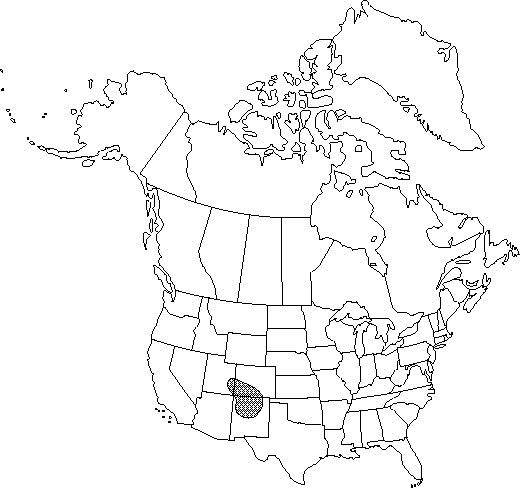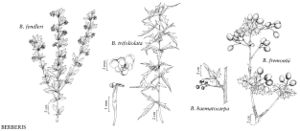Berberis fendleri
Mem. Amer. Acad. Arts, ser. 2, 4: 5. 1849.
Shrubs, deciduous, 1-2 m. Stems dimorphic, with elongate primary and short axillary shoots. Bark of 2d-year stems purple, glabrous. Bud scales 1-2 mm, deciduous. Spines present, simple or 1-2-pinnately branched. Leaves simple; petioles 0.2-0.7 cm. Leaf blade narrowly elliptic, 1-veined from base, 1.7-4.6 × 0.6-1.7 cm, thin and flexible, base long-attenuate, margins plane, entire or toothed, each with 3-12 teeth 0-1 mm high tipped with bristles to 0.4-1.4 × 0.1-0.2 mm, apex acute to obtuse or rounded; surfaces abaxially dull or glossy and smooth, adaxially dull or glossy and not glaucous. Inflorescences racemose, lax, 4-15-flowered, 1.5-4.5 cm; bracteoles membranous, apex acuminate. Flowers: anther filaments without distal pair of recurved lateral teeth. Berries red, not glaucous, oblong-ellipsoid, 6-8 mm, juicy, solid.
Phenology: Flowering spring–summer (May–Aug).
Habitat: Slopes and canyon bottoms
Elevation: 1300-2700 m
Distribution

Colo., N.Mex., Utah.
Discussion
Berberis fendleri is susceptible to infection by Puccinia graminis.
Selected References
None.
